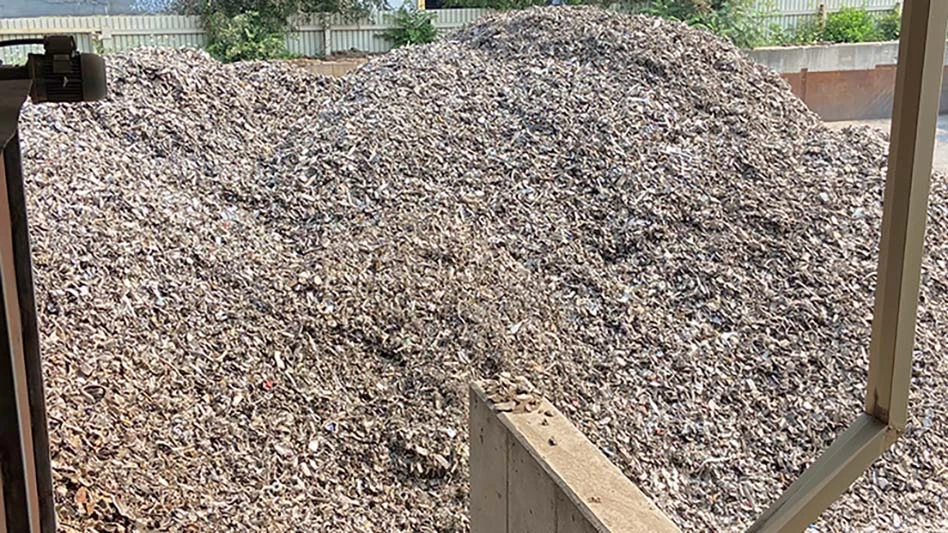Plastic recycling process. One stumbling block to broader adoption of a circular economy is the low value of plastics recycled from mixed plastic scrap. The highest value is assigned to plastics that have been separated by resin type and/or color. Molders and manufacturers using these mixed-color plastics usually are limited to making products that are black, of low value and out of sight.
Impact Laboratories Ltd. of Grangemouth, Scotland, has applied for a patent for a system to extract pigments from mixed plastic scrap to increase their value.
Methods exist to clean the surface of plastics and some can remove the color from ink on the surface, but they don’t remove the color from the plastic itself. Other techniques have been shown to remove a single pigment but require carcinogenic compounds, high-energy inputs and hours of extraction time, making them impractical for continuous or near-continuous processes.
The patent application describes the use of a solvent that can remove one or more color pigments and is itself recycled in the process. It can perform this action in a continuous, semicontinuous or batch process and be operated at a commercial scale.
According to the patent application, the process includes introducing end-of-life plastic feedstock and a solvent into a reactor. The feedstock can be any type of plastic currently recycled or destined for landfill and can be in shredded, granule or pellet form. After the feedstock is introduced, the reactor employs a high-shear mechanism to mix them to extract at least one pigment. The shear mechanism maximizes the solvent’s contact with the pigment and, thus, its opportunity to dissolve the pigment.
Next, the solvent is removed from the reactor, and the pigment is separated from the solvent and collected. The treated plastic is removed from the reactor and collected. New plastic scrap feedstock is then fed into the reactor, and the previously separated solvent is reintroduced to the reactor to begin the process again.

In a preferable embodiment, the shear mechanism is an extruder. In other embodiments, the shear mechanism may be an emulsifier unit, two or more counter-rotating rollers, a baffled oscillation separation system or a shredder. Other features that could be included in the process are a heating element for the reactor and the introduction of an inert gas into the chamber, such as nitrogen, to prevent decomposition of the plastic when it is heated.
If the plastic product removed from the reactor after a single stage is colorless, it can be pelletized for resale.
“The process may be repeated with a different solvent to thereby remove another colour of pigment. In this way a multistage process is formed for stepped pigment extraction with each stage removing a different colour or group of colours with different solvent formulations,” the application states.
In a preferred embodiment, the solvent is an ionic liquid, which has the advantage of maintaining efficacy after reuse for dozens of cycles. Xylene, which decreases extraction time, could be used as an additive. “By selection of a suitable solvent … the extraction of carbon black and blue/black pigment from PET [polyethylene terephthalate] food trays can be achieved,” the application states.
The process does not degrade or depolymerize the plastic.
Patent application 20220040889; published Feb. 10
Get curated news on YOUR industry.
Enter your email to receive our newsletters.

Explore the Summer 2022 Plastics Recycling Issue
Check out more from this issue and find your next story to read.
Latest from Recycling Today
- Ship dismantlers navigate new regulatory regimen
- Gershow announces several community involvement projects
- McKinsey identifies engineering polymers as a recycling opportunity
- Metso acquisition focuses on mill liner recycling
- Malaysian customs office seizes scrap containers
- Lindner establishes Brazil subsidiary
- Tire recycling veteran predicts growth in pyrolysis
- ShearCore adds FC95 to concrete processor line






